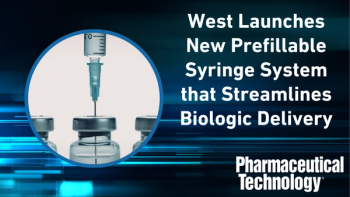
The Design Driver for Biosimilar Adoption
Industry opportunities are increasing for biosimilars, but companies should pay close attention to delivery device design to facilitate success.
The increasing number of original reference biologics coming off patent over the past few years is well known within the pharmaceutical industry with 17 coming off patent in Europe between 2018–2023 (1). The result is a substantial increase in the global market opportunity for manufacturers of biosimilars. A recent report includes modelling of this opportunity that estimates it at US$3.12 billion (€2.76 billion) per year-even after factoring competitive discounts and based on a 50% market share (1).
The commercial impacts of biosimilars in the pharmaceutical market are already taking place and include the appearance of price discounts approximating the 30% mark in Europe (2), which directly results from the wider availability of drug choice. While this will hugely benefit healthcare systems and patients worldwide, it is hoped that the price drop will stabilize without threatening the commercial incentive for pharmaceutical manufacturers to continue investing in new drug discovery, development, and regulatory approval.
As the United States Food and Drug Administration and the European Medicines Agency begin to demand an increasing amount of comparative data to support biosimilar regulatory approval versus the original biologic and in some cases the need to demonstrate additional benefits, and as independent studies (3), showing the transition to be well-tolerated by patients, are documented, the evidence supporting the switch from original biologic to biosimilar is increasing. But another important driver for biosimilar adoption is posed by healthcare regulators, managers, and clinicians who would like to harness the cost reductions and improved access to healthcare.
Device design is integral
A growing body of evidence shows that the design of the drug delivery device may be instrumental to facilitating this switch (4,5). Device ease-of-use is particularly important for subcutaneous injections as self-administration by debilitated patients with reduced mobility becomes more common. Many pharmaceutical businesses are understanding that the success of biosimilar adoption extends far beyond the actual biosimilar efficacy to include the delivery device and its features. A safe, user-friendly, and patient-centric device that helps to reduce pain on injection, improves dose accuracy, and provides needlestick protection could make an important impact on patients required to switch from original biologic to biosimilar especially when suffering from diseases that require frequent injection.
Device design is therefore clearly instrumental to the success of biosimilars both in competing with original biologics but also in winning new market share as a new wave of products flood the market after a biologic comes off patent. With subcutaneous injections for the treatment of chronic illnesses increasingly taking place outside the hospital setting, in homes and care homes for example, patients can enjoy the freedom of having fewer hospital visits-but need to be able to take their medication independently, accurately, and easily. It has become of utmost importance that ease-of-use, comfort, and convenience of drug delivery devices be factored during the design process of biosimilars and associated so-called ‘combination products’. While switching may not be the preferable choice for everyone and physicians should be the only ones recommending such a course of action, improvements in device design, and ease-of-use may be a persuasive factor for those patients that could switch. Biosimilar manufacturers will need to pay close attention to this aspect if they wish to react to the opportunities presented by patent expiry and gain competitive advantage.
References
1. Owen Mumford, “Competitive Entry: A Research Paper on the Role of Drug Delivery Device Design in Supporting Entry into Competitive Biosimilars Markets,” ompharmaservices.com, Report, November 2019.
2. C. Nabhan, A. Valley, and B.A. Feinberg, The Oncologist, 23 (11) 1261–1265 (2018).
3. G.L. Goll, et al., “Biosimilar Infliximab (CT-P13) is Not Inferior to Originator Infliximab: Results from a 52-Week Randomized Switch Trial in Norway,” Poster Session at the American College of Rheumatology/Association of Rheumatology Professionals Annual Meeting (Washington, DC, USA, 2016).
4. F.C. Araújo, J.E. Fonseca, and J. Goncalves, EMJ Rheumatol., 5 (1) 66–74 (2018).
5. GABI Online, “Alternative Delivery Devices for Biosimilars,” gabionline.net, News, 1 June 2012.
Newsletter
Get the essential updates shaping the future of pharma manufacturing and compliance—subscribe today to Pharmaceutical Technology and never miss a breakthrough.




